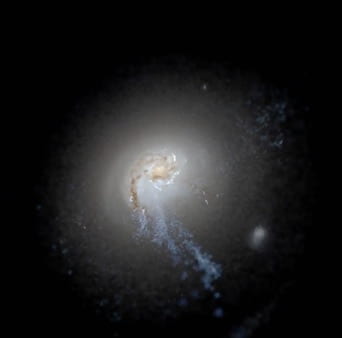
Thomas Donlon II, Heidi Jo Newberg, Robyn Sanderson, Lawrence M. Widrow
‘Shell structures’ are first of their kind found in the galaxy. Nearly 3 billion years ago, a dwarf galaxy plunged into the center of the Milky Way and was ripped apart by the gravitational forces of the collision. Astrophysicists announced today that the merger produced a series of telltale shell-like formations of stars in the vicinity of the Virgo constellation, the first such “shell structures” to be found in the Milky Way. The finding offers further evidence of the ancient event, and new possible explanations for other phenomena in the galaxy.
Astronomers identified an unusually high density of stars called the Virgo Overdensity about ...
Read More








Recent Comments